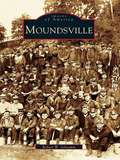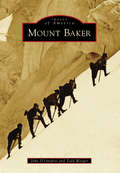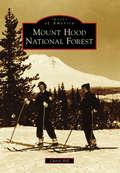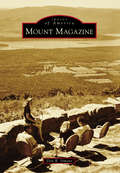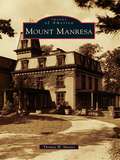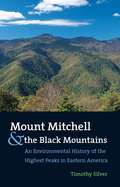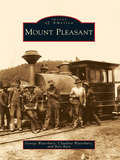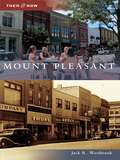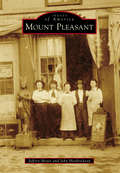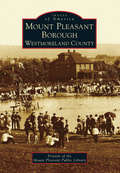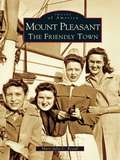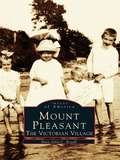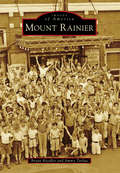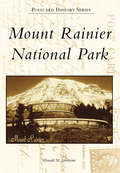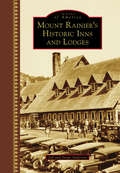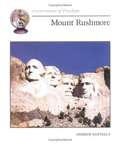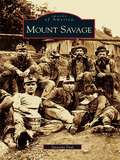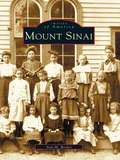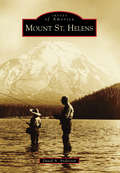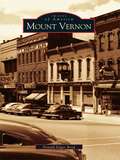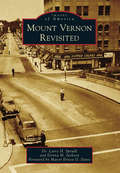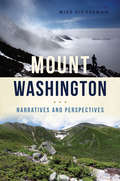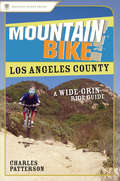- Table View
- List View
Motorworld
by Jeremy ClarksonJeremy Clarkson invites us to Motorworld, his take on different cultures and the cars that they drive.There are ways and means of getting about that don't involve four wheels, but in this slice of vintage Clarkson, Jeremy isn't much interested in them.Back in 1996, he took himself off to twelve countries (okay, eleven - he goes to America twice) in search of the hows, whys and wherefores of different nationalities and their relationships with cars. There were a few questions he needed answers to:* Why, for instance, is it that Italians are more interested in looking good than looking where they are going?* Why do Indians crash a lot?* How can an Arab describe himself as 'not a rich man' with four of the world's most expensive cars in his drive? * And why have the otherwise neutral Swiss declared war on the car?From Cuba to Iceland, Australia to Vietnam, Japan to Texas, Jeremy Clarkson tells us of his adventures on and off four wheels as he seeks to discover just what it is that makes our motorworld tick over. _____________Praise for Jeremy Clarkson:'Brilliant . . . laugh-out-loud' Daily Telegraph'Outrageously funny . . . will have you in stitches' Time Out'Very funny . . . I cracked up laughing on the tube' Evening Standard
Moundsville
by Robert W. SchrammFrom 250 to 150 B.C., the Adena people constructed a burial mound by moving 60,000 tons of earth. The resulting formation, the largest conical burial mound in the country, is located in the middle of the namesake town of Moundsville, West Virginia. Although the Grave Creek Mound, as it is now called, attracts spectators from miles around and is the showpiece of the locals, it is not the only noteworthy feature of the town. Fokker Aircraft Factory, the Fostoria Glass Company, United States Stamping Company, and the Marx Toy Company were all located in Moundsville and nearby Glen Dale, and many of the employees were town residents. The area is also home to the old West Virginia Penitentiary, which is now a national historical landmark, and the Daily Echo, a country newspaper that has been the voice of the community for more than 100 years. The county seat of Marshall County, Moundsville is a Southern town immersed in history and full of people dedicated to its preservation.
Mount Baker
by John D'Onofrio Todd WargerMount Baker rises over northern Washington State like a mirage, dominating the landscape like few mountains in the United States. On a clear day, it is visible from as far away as Vancouver, British Columbia, and Tacoma, Washington. This immense volcano is a study in superlatives: it is the third-highest peak in the state, holds the world record for snowfall in a season (95 feet!), and is the second-most heavily glaciated peak in the contiguous United States. The mountain also played a dominant role in the history of the region, having served as a beacon to seafarers and a lure for men in search of gold, timber, and adventure.
Mount Hood National Forest
by Cheryl HillThe Mount Hood National Forest is the closest national forest to Portland and encompasses the northern end of Oregon's Cascade Mountains and the Columbia River Gorge. Established in 1908 as the Oregon National Forest and renamed the Mount Hood National Forest in 1924, it now consists of more than a million acres. The forest is home to Oregon's tallest mountain, as well as eight designated wilderness areas covering more than 300,000 acres. The forest is also the site of the historic Timberline Lodge and old Barlow Road, the final leg of the Oregon Trail. Thousands of visitors come to the forest every year for camping, hiking, mountain climbing, fishing, skiing, mountain biking, and other recreational pursuits.
Mount Magazine (Images of America)
by Don R. SimonsThe first known written description of Mount Magazine came from Thomas Nuttall, a noted English botanist, in 1819. Since then, the highest mountain in Arkansas has come to mean many things to many people. To the first settlers of European descent, it was a place to scratch out a living and raise a family through hard work and hardships. To those enduring the Great Depression, it meant jobs. The end of World War II brought numerous outdoor activities. Adventurous recreationists found many ways for the mountain to challenge their abilities. Scientists studying its biological communities discovered unique fauna and flora. Finally, the past two decades have combined all those attributes in the development of Mount Magazine State Park.
Mount Manresa
by Thomas W. MatteoIn 1911, Rev. Terence Shealy purchased the Meyer estate on Staten Island. With magnificent views of the New York Harbor, the estate was a dream come true for Father Shealy. He was at the forefront of the lay retreat movement in the United States, and the Meyer estate was the perfect refuge for men to escape from the stress of everyday life. Judges and bricklayers came together to meditate and enjoy the beauty of this hilltop in rural Staten Island. The lay retreat movement grew and spread across the United States, with thousands coming to Mount Manresa. The house also had a strong relationship with Fordham University. The first retreat took place at Rose Hill campus, and three former Fordham presidents became directors of Mount Manresa after they left their posts in academia. Today Mount Manresa plays host to a multitude of retreats throughout the year, bringing more than 15,000 guests to the campus annually.
Mount Mitchell and the Black Mountains
by Timothy SilverEach year, thousands of tourists visit Mount Mitchell, the most prominent feature of North Carolina's Black Mountain range and the highest peak in the eastern United States. From Native Americans and early explorers to land speculators and conservationists, people have long been drawn to this rugged region. Timothy Silver explores the long and complicated history of the Black Mountains, drawing on both the historical record and his experience as a backpacker and fly fisherman. He chronicles the geological and environmental forces that created this intriguing landscape, then traces its history of environmental change and human intervention from the days of Indian-European contact to today. Among the many tales Silver recounts is that of Elisha Mitchell, the renowned geologist and University of North Carolina professor for whom Mount Mitchell is named, who fell to his death there in 1857. But nature's stories--of forest fires, chestnut blight, competition among plants and animals, insect invasions, and, most recently, airborne toxins and acid rain--are also part of Silver's narrative, making it the first history of the Appalachians in which the natural world gets equal time with human history. It is only by understanding the dynamic between these two forces, Silver says, that we can begin to protect the Black Mountains for future generations.
Mount Pleasant
by Bert Ruiz Claudine Waterbury George WaterburyMount Pleasant has deep American roots going back to the Revolutionary War, when local tenant farmers filled the ranks of General Washington's Continental army. For years, travel to New York City was difficult, until the arrival of the railroad in 1846 allowed easy transportation to lower Manhattan. In 1893, John D. Rockefeller Sr. began buying land in Pocantico and built his classic Georgian mansion. The massive Kensico Dam in Valhalla was completed in 1917 to satisfy the growing thirst of New York City. In 1927, Rose Hawthorne, the daughter of writer Nathaniel Hawthorne, completed the Rosary Hill Home to care for the unfortunate. The following year, Dewitt Wallace and his wife Lila moved to Pleasantville to launch the production of Reader's Digest. Through photographs, Mount Pleasant remembers these historic moments.
Mount Pleasant
by Jack R. WestbrookSince 1860, Mount Pleasant has been a center for Native American culture, lumbering, agriculture, oil and gas production, collegiate learning, and retail shopping; Mount Pleasant now boasts one of the largest gaming casino resorts in Midwest America.
Mount Pleasant (Images of America)
by Jeffrey Meyer John HendricksonFrom its earliest years, Mount Pleasant was known as the �Athens of Iowa�: a small town with a big story and a center of learning and culture. Even during the town�s pioneer era, the citizens of Mount Pleasant championed education, establishing numerous schools and a college. Progressive ideals, including abolitionism and women�s education, took root. As the home of Sen. James Harlan, an important ally of Abraham Lincoln, the city emerged as a bastion of support for the president. During the hardship of the Civil War, the community took up a second cause, becoming the location of the state mental health asylum. The drive for the improvement of life only increased, bolstered by the city�s numerous schools, churches, and most importantly a spirit of community.
Mount Pleasant Borough, Westmoreland County
by Friends of the Mount Pleasant Public LibraryMount Pleasant is a small borough in the Laurel Highlands of Westmoreland County with an immeasurable history. Originally a Native American trail, Main Street was used by Gen. Edward Braddock in 1755 on his journey to his 16th encampment. Generations have lived here since the town was incorporated in 1828. Many immigrants from Poland, Italy, Germany, and Ireland came here to work in the coal, coke, and glass industries, which were growing quickly and spurring successful businesses. The coke works of Henry Clay Frick was established in 1881. Bryce Brothers Glass began in 1896 and became well known for blown stemware and tableware. L.E. Smith Glass Company manufactured handmade American pressed glass in various colors and styles beginning in 1907. The success of these industries led to the Glass Festival, held annually in September. Today, in the center of town is Diamond Memorial Square, the quintessential symbol of Mount Pleasant, where the World War I doughboy was erected in 1924. Mount Pleasant Borough, Westmoreland County shares photographs and stories that illustrate the strong community ties of the area.
Mount Pleasant: The Friendly Town (Images of America)
by Mary-Julia C. RoyallLocated along the shores of the Charleston harbor, Mount Pleasant is a graceful, enchanting community known for its exquisite views of the water and landscape. Once comprised of five small hamlets, the area has seen phenomenal increases in both business and population, a growth that was correctly predicted when the John P. Grace Memorial Bridge linked the town with Charleston in 1929. It is a place where small-town charm lingers, even among the fast-paced life in which most residents now take part. Mount Pleasant: The Friendly Town begins the community's story where Mount Pleasant: The Victorian Village left off, and it bridges the 1930s with modern times. This compelling history illustrates the ways in which Mount Pleasant coped with the happenings of the 20th century, including such far-reaching events as World War II and the recovery following the Great Depression, and those much more intimate such as the devastation of Hurricane Hugo and the sesquicentennial celebration of the town. Readers will experience this unique area of South Carolina through the eyes of the residents who lived here during the town's coming of age.
Mount Pleasant: The Victorian Village (Images of America)
by Mary-Julia C. RoyallMount Pleasant: The Victorian Village is an intimate look at like in the area of the town now known as the historic district, during the slower-paced time before World War II. Called "The Village" by its citizens, this close-knit community along the edge of Charleston harbor was formed when five small English settlements merged in the nineteenth century to create the town of Mount Pleasant. The small town had its own identity and remained a "Victorian Village" due to its isolation from the outside world except by ferry. Rapid growth and change began with the opening in 1929 of the Grace Memorial Bridge over the Cooper River. The bridge linked cities to the north and south via Highway 40 (now 17), thus opening the door for tourism and commerce while creating local accessibility to Charleston.
Mount Rainier (Images of America)
by Jimmy Tarlau Bryan KnedlerMount Rainier began its history as an incorporated town in 1910 with the merging of several subdivisions that straddled Bunker Hill Road, a major route between the ports of Georgetown and Bladensburg. Before the Civil War, Thomas and Anna Clemson owned a 100-acre farm fronting that important road. Their family letters provide some of the earliest writings about the area. In 1891, Elizabeth and Estcourt Sawyer purchased the Clemson farm and named their subdivision Mount Rainier. In 1899, the real estate became especially attractive to commuters when the District of Columbia's streetcar system was extended through the heart of the present-day city; the route, now known as Rhode Island Avenue, later became part of US Route 1.
Mount Rainier National Park (Postcard History)
by Donald M. JohnstoneMount Rainier rises 14,410 feet above sea level and can be seen on any given day by over three million people and from over 100 miles away. It is America's fifth national park, established in 1899. The mountain is an active but currently dormant volcano. With 25 named glaciers, 50 smaller unnamed glaciers, and numerous perennial snowfields, Mount Rainier boasts the largest glacier system in the continental United States. In addition to the glacier zone, the park has alpine and subalpine forest and subtropical rain forest. Each zone has its own unique ecology of plants and animals. The vistas of and from the mountain are some of the most spectacular in all of the park system.
Mount Rainier's Historic Inns and Lodges (Images of America)
by Jeff Sonja AndersonPresiding over the Puget Sound region, Mount Rainier has lured adventurers and entrepreneurs to its slopes since the earliest settlers. Visitors rode packhorses or hiked miles to tent “hotels” at Theosophy Ridge, Indian Henry’s Hunting Ground, and Ohanapecosh. James Longmire opened Longmire Springs Hotel near bubbling mineral springs. In 1899, Mount Rainier became a national park, and eventually, a motley array of services was consolidated by the Rainier National Park Company, which built National Park Inn and Paradise Inn. Roads, services, and activities expanded, and guests poured in. Winter activities, such as skiing and tobogganing, increased the park’s popularity. The 1936 Winter Olympic Ski Trials and training for World War II ski troops were even hosted there. Visitors today might be surprised to know that many inns, rental cabins, bathhouses, and other buildings have come and gone, leaving some areas more pristine now than for much of the park’s history.
Mount Rushmore (Cornerstones of Freedom)
by Andrew SantellaRelates how the Mount Rushmore National Memorial, known as "The Shrine of Democracy," was conceived, designed, and created.
Mount Savage
by Amanda PaulThe town of Mount Savage, Maryland, is a small blue-collar town nestled at the base of Big Savage Mountain in the Allegheny Mountains, between Frostburg and Cumberland. The town began as a small farming settlement in the mid-1800s, but it was not until 1844 that the region was put on the nation's map with the pressing of the first iron rail in the United States. After this claim to fame, Mount Savage became the fifth largest city in Maryland. Named as the headquarters for the short line railroad and the Cumberland & Pennsylvania Railroad, the area was deemed an industrial center. In addition to the rail businesses, Mount Savage attracted a foundry, two brick refractories, and several local merchants. In this company town, the industries shaped the economy and topography of Mount Savage, building housing for workers and donating land for schools, churches, and other public buildings. The town was a cultural melting pot attracting English businessmen and Irish, Scottish, Welsh, Italian, and German workers. With this diverse mix of cultures, the identity of Mount Savage was molded into a close knit community. Despite the loss of the industries to the region, Mount Savage continues to celebrate its hard-working traditions. The photographs contained in Images of America: Mount Savage offer a fascinating look into the irreplaceable memories of the people and places that have made Mount Savage what it was, is, and will become.
Mount Sinai (Images of America)
by Ann M. BeckerTucked alongside a harbor on Long Island's north shore, Mount Sinai has long attracted residents and visitors. It was the site of an early European settlement in 1664 and the embarkation point of the Revolutionary War foray into enemy territory by Maj. Benjamin Tallmadge, a member of Gen. George Washington's Setauket spy ring. Mount Sinai was a farming and seafaring community in the 1600s, 1700s, and 1800s. In 1891, it became the site of the "sanitary resort" known as the Crystal Brook Park Association. Later, it drew an early community of artists and photographers who captured the natural beauty of the area. Mount Sinai portrays these and many other events of historical and cultural interest.
Mount St. Helens
by David A. AndersonThe story of Mount St. Helens is that of an active volcano and human interaction with it. The mountain is culturally important to the regional native people. Its Cowlitz name, Lawetlat'la, means "Person From Whom Smoke Comes." Early European settlers saw opportunities to make a living from the natural resources, and people fell in love with the forested valleys and slopes of the glacier-clad peak with the blue lake at its foot. Forgotten were the eruptions of the 19th century and the fact that the landscape was a product of frequent violent explosions. A report from the 1970s reminded locals that Mount St. Helens is an active volcano and could erupt again before the end of the 20th century. Only a few people at that time were aware of what the mountain was capable of, and many were surprised at the events that took place in 1980.
Mount Tabor
by Mount Tabor Historical SocietyOne of New Jersey's earliest permanent Methodist camp meeting grounds, Mount Tabor embodied the austere evangelical fervor of 1869. Canvas tents on 16-by-25-foot leased lots surrounded Trinity Park, the focal point of all religious and social activity for 10 days in late August. The camp meetings were hugely successful, and the growing community needed more permanent housing. Narrow, two-story Victorian cottages with intricate porches and balconies began to sprout on the lots. In 1885, the octagonal-shaped tabernacle, with its soaring walls and heaven-high ceiling, was built. As early as 1891, the religious summer colony expanded its recreational activities,and by 1912, Mount Tabor was more of a summer resort than religious retreat. After World War II, most of the 350 cottages were converted to year-round use, and Mount Tabor became a community within Parsippany, welcoming people from all religions and backgrounds. Today the unpretentious charm of its humble beginnings permeates the quaint community, and modern residents, like their forebears, are drawn to the rich, spiritual heritage of goodwill and the delightful cottages that invite fellowship.
Mount Vernon
by Donald Edgar BoydIn 1805, veterans of the American Revolution claimed a plot of land in Ohio as reward for their military service, settling the town of Mount Vernon. In honor of President George Washington, the town was named after his colonial farm, and Mount Vernon remained true to its image, earning it the nickname of "Ohio's Colonial City." The town takes pride in its many original, well-preserved grand historic homes and mansions. An architectural gem and America's oldest, authentic 19th-century theater, the Woodward Theater is currently being renovated and 200 years later, today's vehicles still rumble over the Colonial City's original brick streets.
Mount Vernon Revisited (Images of America)
by Donna M. Jackson Mayor Ernest Davis Dr Larry SpruillAn important gateway suburban community, Mount Vernon was formed around the construction of two commuter rail lines to and from New York City. In the first quarter of the 20th century, its contiguous borders with Greater New York, rapid population growth, automobiles, petroleum, and industrial development set the stage for the encroachment of urban realities on the upwardly mobile founders' hopes for a sustained and prosperous suburban lifestyle. Through images that illustrate the power of 20th-century transportation technologies, new energy sources, and dynamic demographic forces on this "City of Happy Homes," Mount Vernon Revisited commemorates pivotal milestones of the past 150 years while offering indicators of the city's potential and identity.
Mount Washington: Narratives and Perspectives
by Mike DickermanFor two centuries, Mount Washington has been the object of countless writers� wonder and fascination. In this volume, more than twenty previously written pieces inspired by New England�s highest peak have been carefully selected, and collectively these cover nearly every aspect of the mountain�s storied past. Tag along on early explorations of the White Mountains and its fabled Presidential Range. Follow the history of the nation�s first mountain-climbing train and witness many of Mount Washington�s tales of human tragedies. Editor and area historian Mike Dickerman explores the captivating history of one of the Granite State�s most remarkable places.
Mountain Bike! Los Angeles County
by Charles PattersonMountain Bike! Los Angeles County is must-have literature for the cyclist who is eager to explore the wonderful terrain that housed the genesis of mountain biking in the late seventies. In this trail guide you'll find detailed maps of carefully planned routes, some popular and some unknown to many, as well as comprehensive descriptions of what hazards and delights you'll encounter along the way. Whether you're a adrenalin seeking downhill bomber, or a gram-counting cross country racer, the Wide Grin guide will be your bible. Los Angeles County has every conceivable type of mountain bike accessible terrain, from remote, loamy oak forest floor singletracks without a person in sight, to roller coaster, rock-garden filled chutes that will give you plenty of thrills. Several easier routes for novice riders are also included.Over the years, mountain biking has become a multi-faceted sport, encompassing several disciplines that all utilize the 26-inch knobby tire. The masochistic single-speeder, the cross country racer, the dirt-jumping purist, the downhill racer, the freerider, the epic rider and the weekend warrior will all find their needs catered to in this guide. Each route is rated on technical and aerobic difficulty, so no rider will get more than they bargained for. Additionally, GPS waypoints for the start of each route are given in both UTM and latitude/longitude coordinates, so you'll never find yourself lost.Los Angeles County has enough riding terrain to keep your riding experiences new, fresh, and challenging for a lifetime. Even veteran Angelinos will find themselves surprised at the number of great loops and shuttle-runs unbeknownst to them until now. After a broad tour of LA's mountain bike playgrounds, you'll surely cancel your plans to relocate to Vancouver's North Shore or to the city of Moab, Utah, because Socal truly is the Mecca of mountain biking, and Los Angeles is right in the center of it.

